While in London, I decided to visit the space exhibition at the local Science Museum to explore interesting facts and share my own experiences.
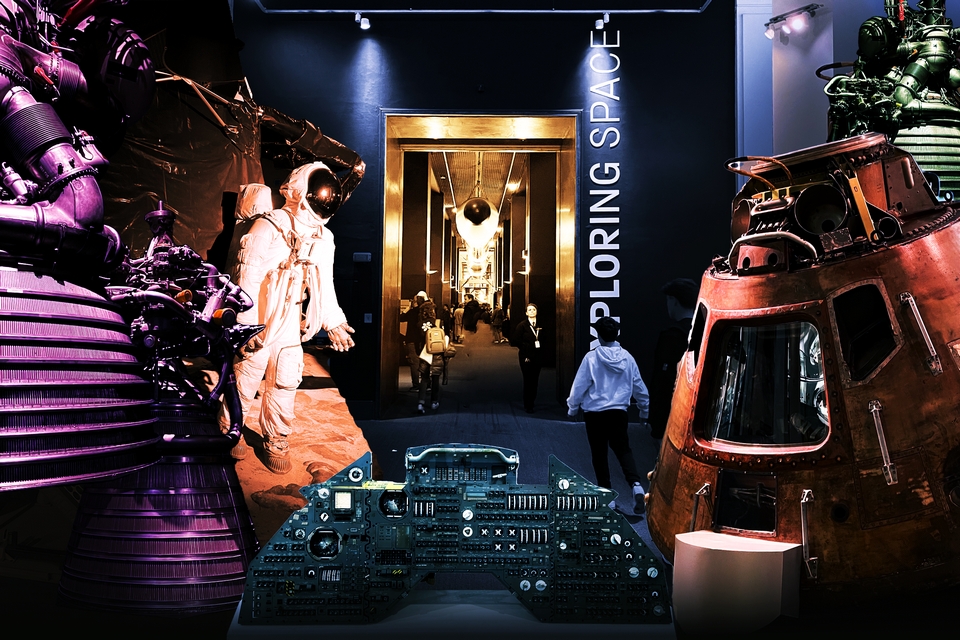
My first impression of the museum was the overwhelming astonishment from the queue. I should note that I arrived 30 minutes after the opening, yet there were still dozens of people patiently inching their way inside. Moreover, on my way from the metro station, I passed by the Natural History Museum, where an equal number of eager visitors gathered. The second pleasant surprise was the presence of children accompanying almost every visitor. In other words, the museum was filled with numerous children of different ages. So, if you’re looking for a quiet exploration, this may not be the place for you, unless you come on a weekday. Although, considering the influx of school trips, even that might not guarantee tranquility.
Entrance to the Science Museum is free, except for temporary exhibitions, the Experimentarium, and the cinema. The museum’s cinema is one of only two in Europe equipped with an ultra-modern IMAX laser projector of the new generation. Here, you can dive into the depths of the oceans, observe the universe with the Hubble telescope, experience the thrill of asteroid hunting, and visit Antarctica. Tickets for these areas range from £10 to £20. The museum staff suggest making a donation of £5 to £10 for the museum’s development, but it is not obligatory.
The museum houses exhibitions dedicated to human exploration of space, medicine, communication development, technology, and energy consumption. You will learn how the dream of flight led to the invention of airplanes, how technology has transformed our lives in the last 250 years, and how genetics and upbringing influence your personality. There is even an exhibition about mathematics! Another pleasant experience is the interactive space on the -1 floor designed for children aged 3 to 6. Here, kids play with water, light, sound, construct things, and learn to observe, explore, and draw conclusions through play.
Exploring Space
Of course, I couldn’t pass by the exhibition on human exploration of space. I must say that there are plenty of references to the Soviet Union here. At the entrance, there is a machine that carves commemorative coins with Gagarin’s image for £2, and the exhibition begins with a replica of the first spacecraft, “Sputnik.” Unfortunately, many British people do not distinguish between the Soviet and Russian periods. While examining the exhibits, I overheard a mother explaining to her child that the Russians were the first to go into space and that they achieved a lot in its exploration.
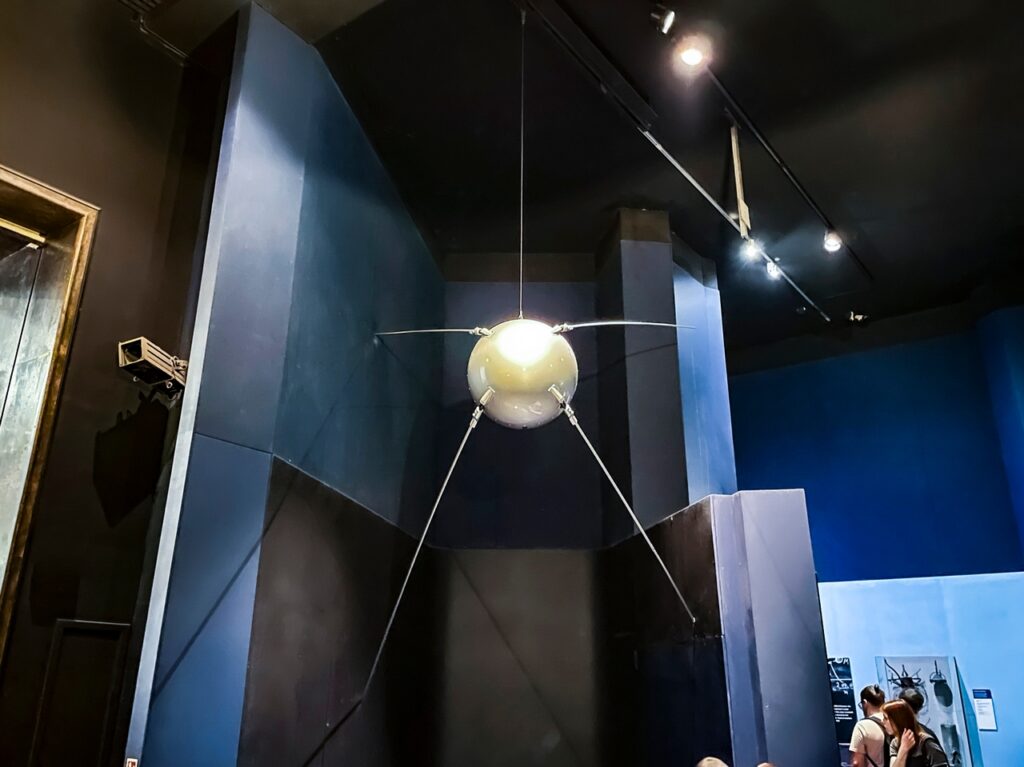
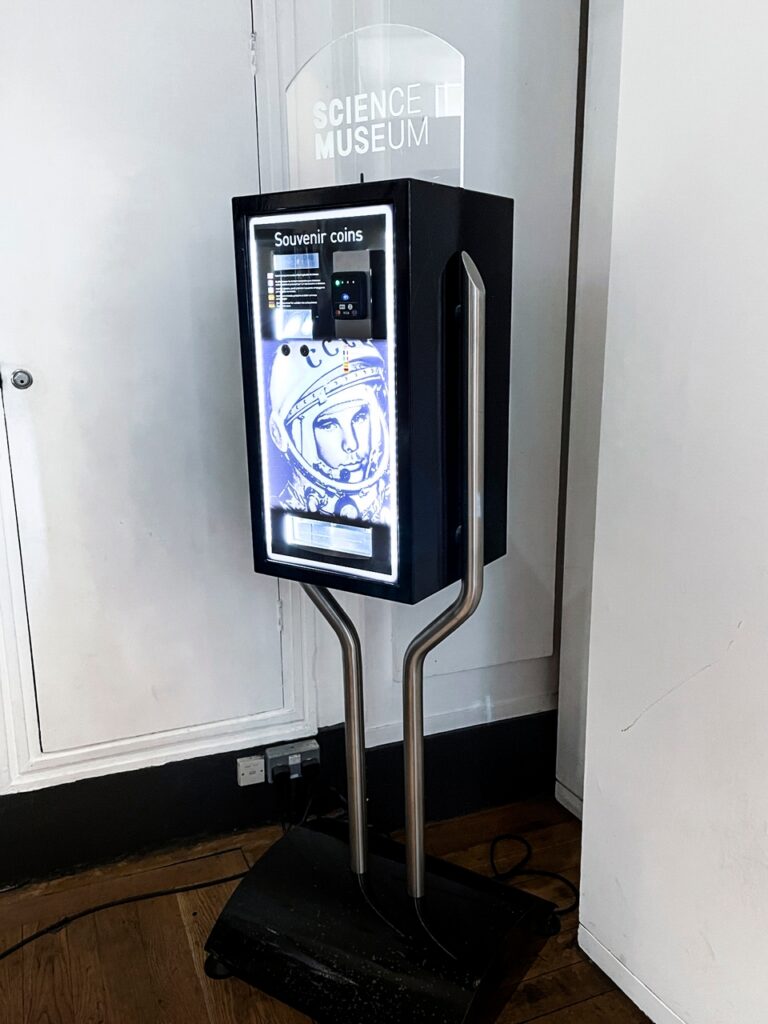
The exhibition is divided into sections: rockets, lunar races, space technologies, exploration of the universe, and artificial satellites. The presentation of information is excellently organized using visual, textual, and interactive methods. This can be seen in the way the layout of the Soyuz descent module is demonstrated. The module itself is located at the center of the exhibition, surrounded by stands with facts and information about it. These displays include photos, diagrams, videos, and text. Additionally, one of the stands is interactive, allowing visitors to explore the interior of the module. Therefore, even without a guide, museum visitors can learn a lot.
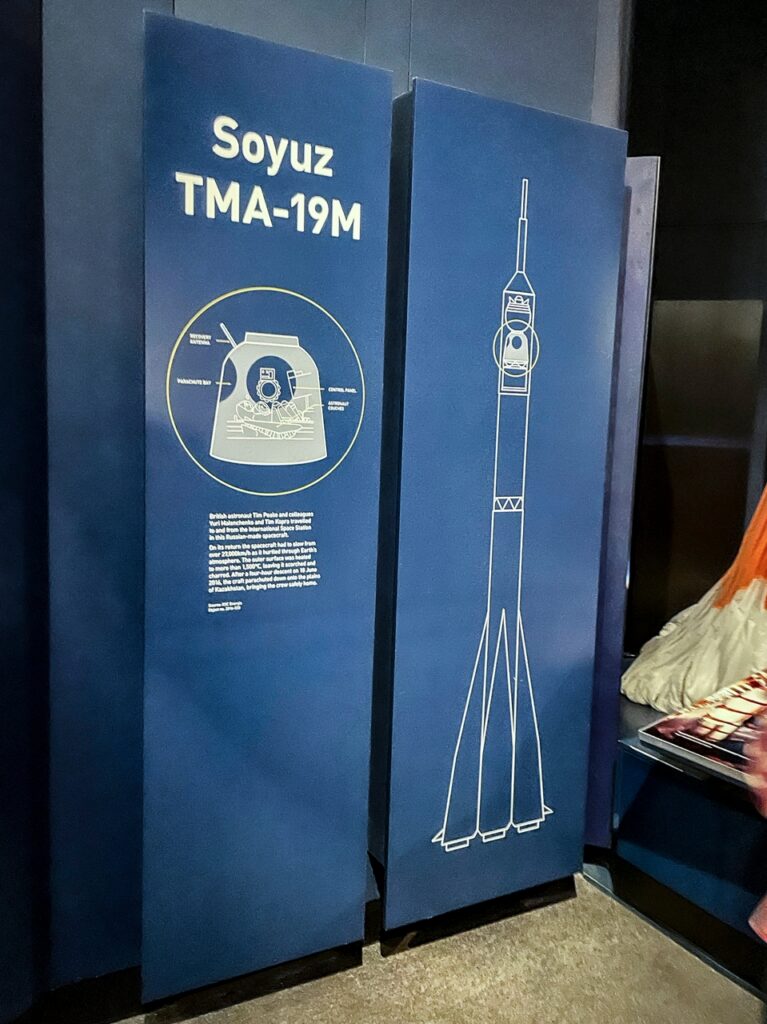
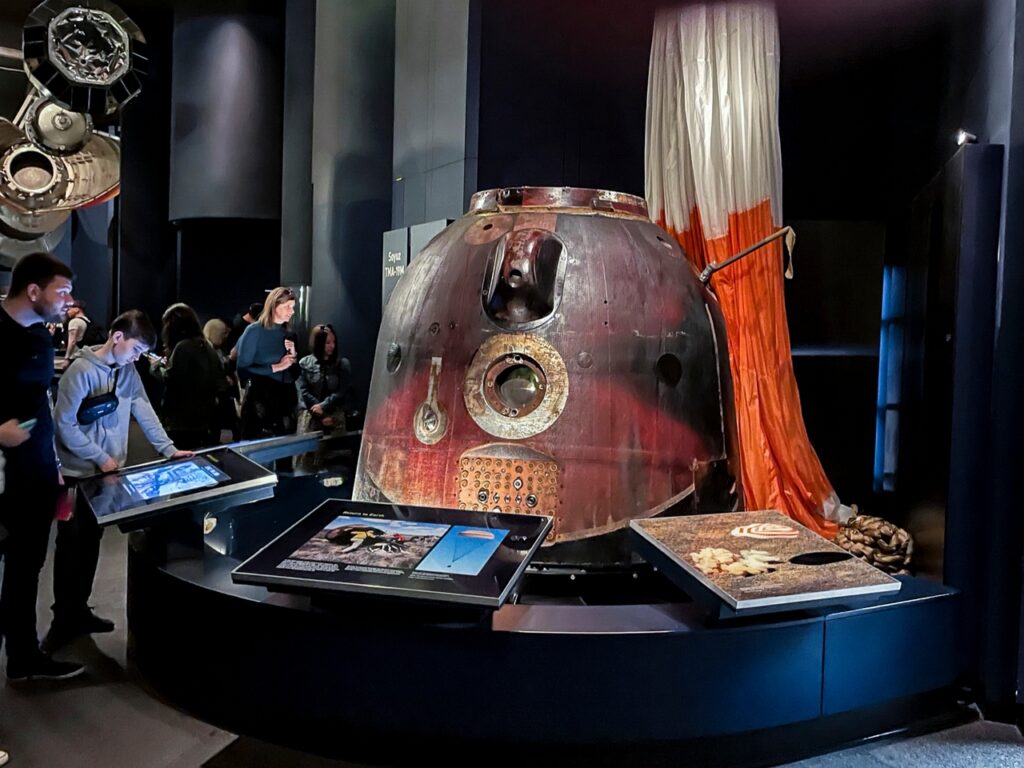
By the way, this interactive exploration of the Soyuz module is incredibly captivating, which is why children always crowd around it. To approach it, one needs to wait for their turn. And capturing a video of this activity is almost impossible, as a child’s hand will inevitably enter the frame, eagerly trying to peek inside the module.
Interactive overview of the Soyuz descent module from the inside
I really liked that the museum doesn’t just showcase exhibits but presents a coherent and logically connected picture. For example, the story of space rockets starts with the description of the origins of rocket artillery, and if you are thinking of the Soviet “Katyusha” MRLS, you’re mistaken. Its development actually dates back to the 18th century. Moreover, this weapon was used in colonial wars by the British, including hostilities against the United States. The exhibition continues with the works of Tsiolkovsky and Goddard, followed by the development of rocket artillery and rockets during World War II, and then the advancements made by the United States and the Soviet Union in the 1950s, and so on up to the present day.
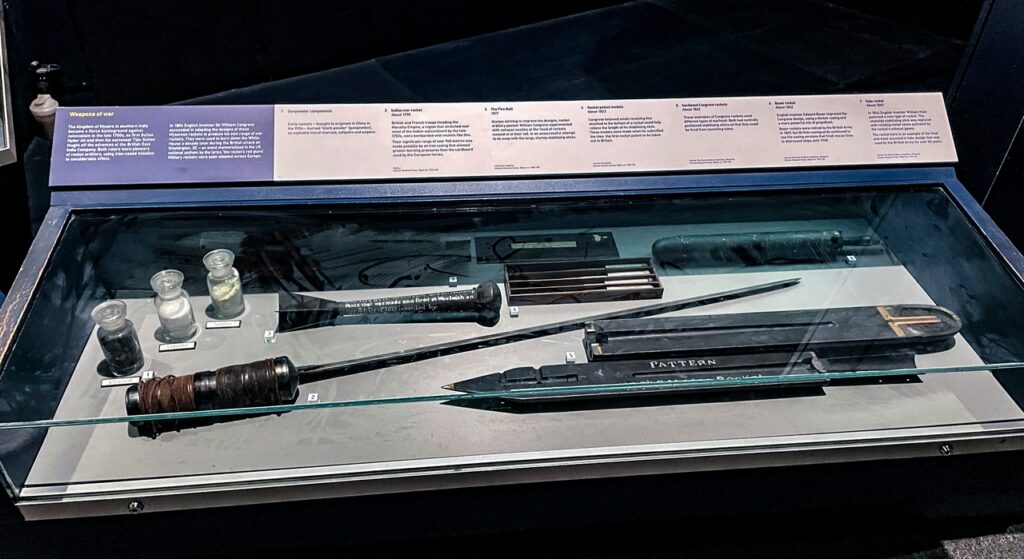
By the way, here I saw a model of the German launch pad for the first V-2 ballistic missiles used for bombing Britain, Belgium, and France. Next to this installation is information that a total of three thousand rockets were launched over the territories of these countries, traveling at supersonic speeds. This meant that people didn’t have time to receive warnings of the danger. The launches were carried out from occupied Netherlands. Near this exhibit, parents were telling their children about the war, about the bombings of London and Britain, Hitler, and about German Nazism.
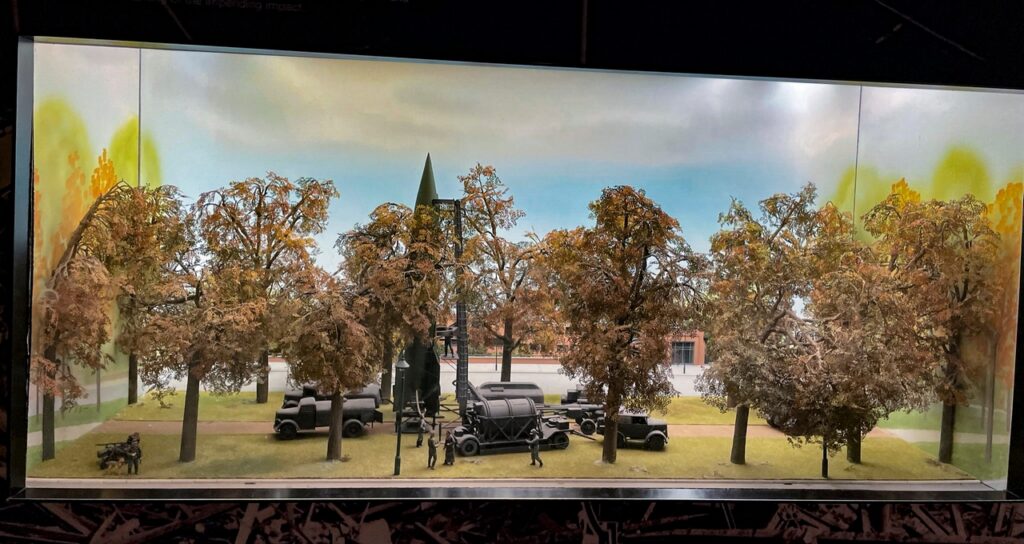
Exploring the Universe
In another part of the exhibition, there are spacecraft that explore the universe. One of them is the Huygens probe, which successfully landed on Saturn’s moon Titan in 2005. Here, you can learn more about the Solar System and its exploration.
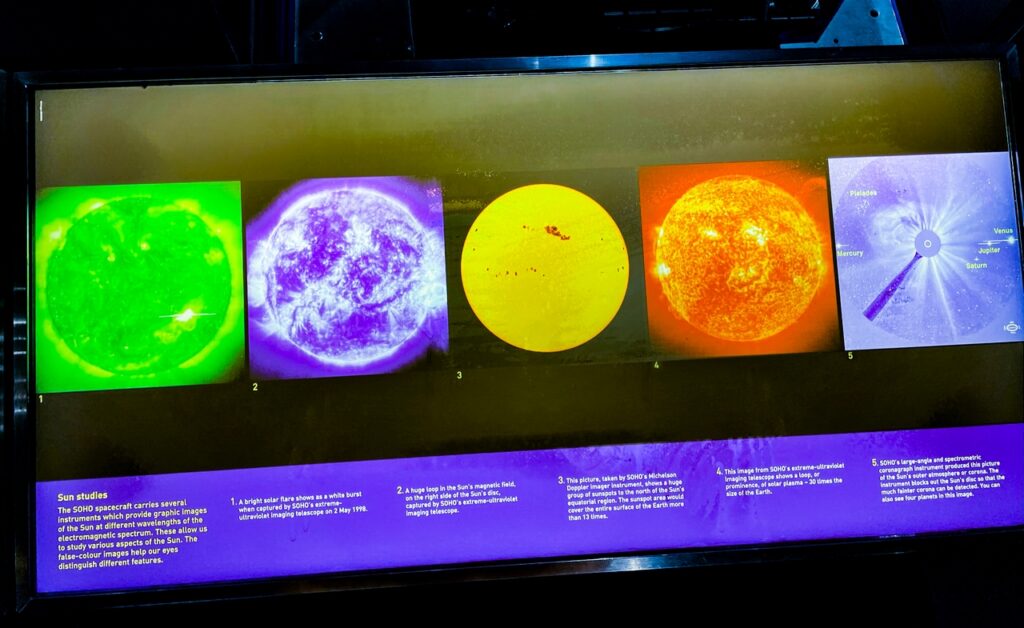
The museum has an interesting installation called “Planetology,” which offers a journey through the Solar System. Inside the exhibition hall, there is a seating area — a much-needed feature after walking 10 kilometers during that day. Around a huge sphere that displays the planets of our system, including the Sun and the Moon, benches are placed. While resting your feet, you can listen to interesting facts about the Solar System. The entire overview takes about 7-8 minutes.
What else you can see
The Science Museum in London has a vast exhibition. Here, you can see the lunar module Eagle from the Apollo 11 mission, which landed on the Moon in 1969, learn about hygiene in space, and even work with gloves designed for spacewalks. One particularly exciting aspect is how one exhibition seems to seamlessly blend into another. For example, near the entrance, you are greeted by a device from the TV series Doctor Who, and in the “Space Exploration” gallery, there is a model of a ship from the Star Trek movie that leads visitors to the exhibition “Science Fiction: Voyage to the Edge of Imagination,” which is located in another area. When you enter the next exhibition hall, “Creating the Modern World,” you see the Apollo 10 command module and the Airbus ESA. This creates a unified picture of the world. It was fascinating to discover such surprises in different parts of the museum.
